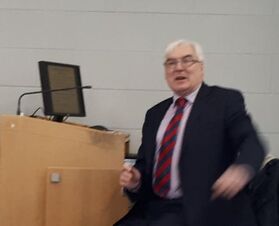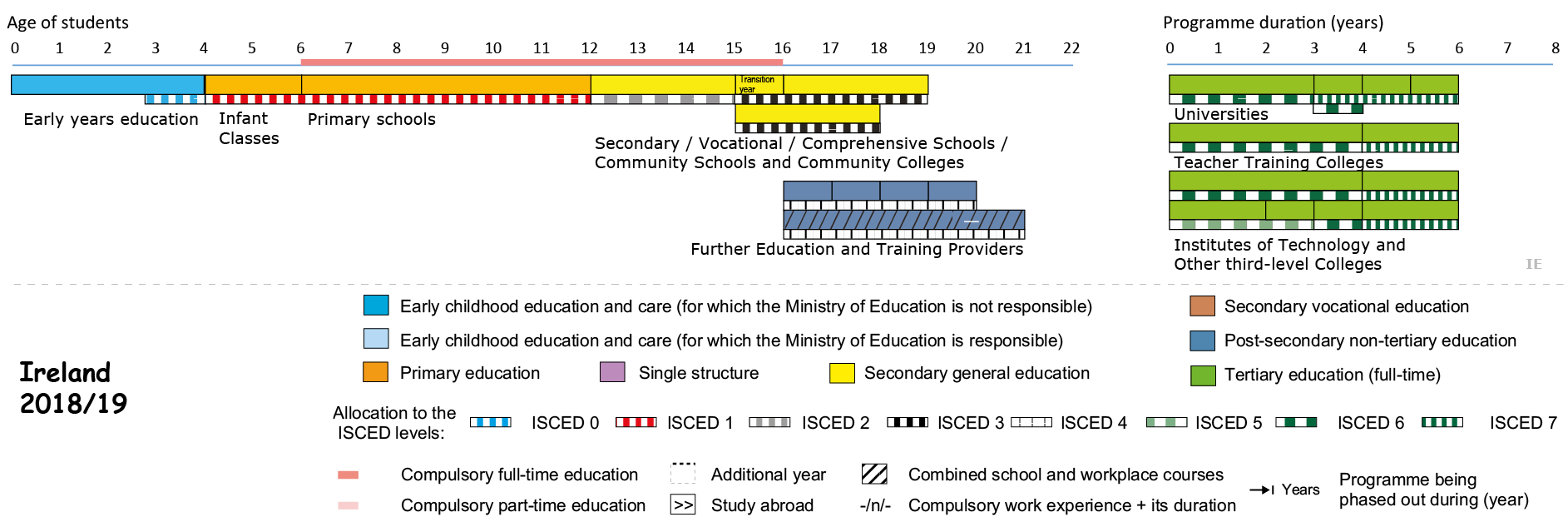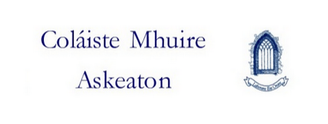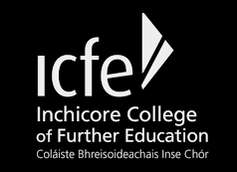Dublin, Ireland, February 2019
Participant : Sampsonoglou Pantelis
The Irish Education System
|
Irish Education Characteristics
• Complex structural and management systems
• Legacy of history and tradition • Denominational aspects • Centralised syllabus and curriculum • State aided and supported • Growing multidenominational demand |
George O’Callaghan
Teacher of Irish and History Chief Executive – Limerick and Clare Education and Training Board |
Stages of the Education System
Education is compulsory for children in Ireland from the ages of six to sixteen or until students have completed three years of second-level education. In practice, however, the norm is to start school at age 4, and 99% of all children are in school by age 5. Some 90% complete upper secondary education.
Children normally attend primary schools for 8 years from age 4 to 12. They transfer to a second level school of their choice and follow:
Early school leavers may enter a 2 year Youthreach programme in the Further Education Sector. Following completion of the Leaving Certificate programme, the majority of students enter Higher Education (c 55%) or Further Education or Training (c 28%), following certificate, diploma and/or degree programmes of varying lengths.
Children normally attend primary schools for 8 years from age 4 to 12. They transfer to a second level school of their choice and follow:
- A 3 year programme of lower secondary education, for students generally aged 12-15, leading to the award of the Junior Certificate. (This is a national examination overseen by the State Examinations Commission.) With effect from 2017, the title of this award has been changed to a Junior Cycle Programme of Achievement, combining both school based and State examinations assessment
- An optional one year programme called the Transition Year (an estimated 68% follow this option), which forms part of upper secondary education. Those who do not follow this programme may move directly into the two year Leaving Certificate programme (3)
- A two year Leaving Certificate programme culminating in a national Leaving Certificate examination operated by the State Examinations Commission. This marks the end of upper secondary education. Leaving Certificate students are generally aged 16 -18 years.
Early school leavers may enter a 2 year Youthreach programme in the Further Education Sector. Following completion of the Leaving Certificate programme, the majority of students enter Higher Education (c 55%) or Further Education or Training (c 28%), following certificate, diploma and/or degree programmes of varying lengths.
Visit to Schools/Institutes
1. Colaiste Mhuire, Askeaton, Limerick
|
|
Coláiste Mhuire was established in 1994, as part of an amalgamation process with the Vocational School in Shanagolden, the Mount Trenchard Secondary School and St. Mary’s Secondary School.
School's Aim:
“Learning Support is designed to help students with learning challenges to achieve success at school”. |
2. Inchicore College of Further Education, Dublin
3. Loreto Abbey Secondary School, Dalkey







